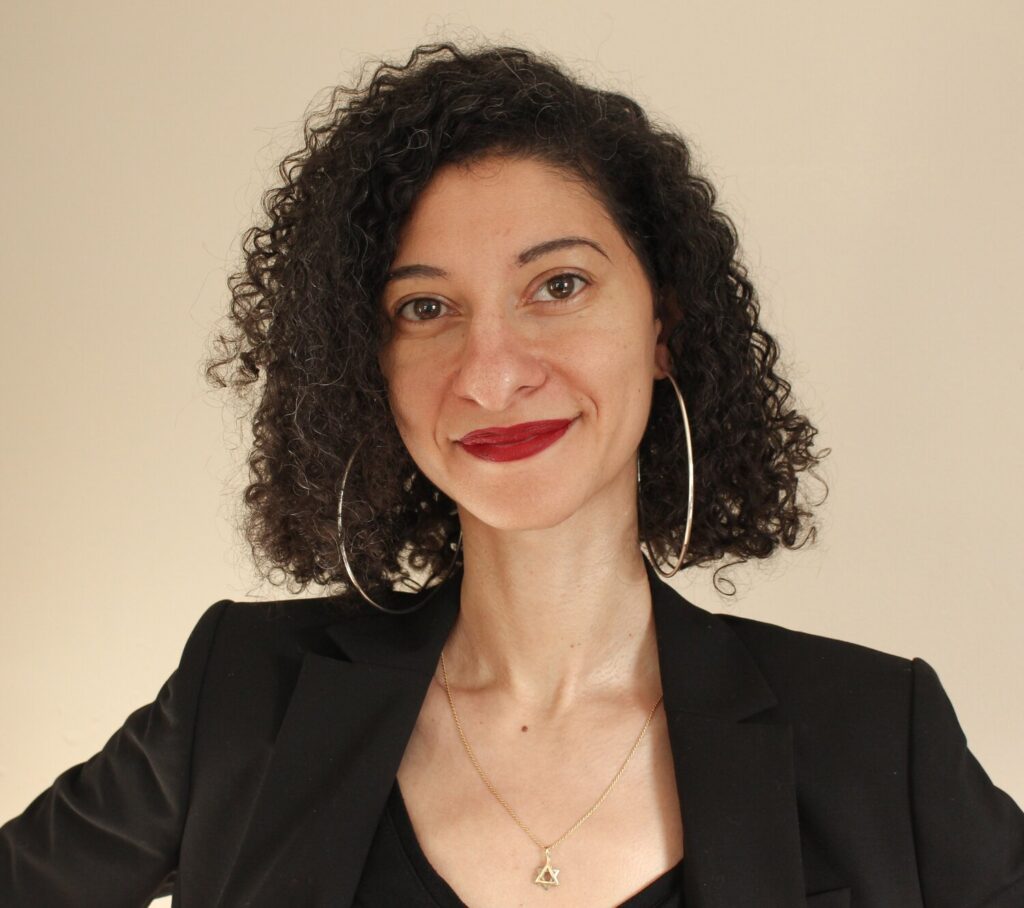In this series of posts, we sit down with a few of the keynote speakers of the 241st AAS meeting to learn more about them and their research. You can see a full schedule of their talks here, and read our other interviews here!

Professor Chanda Prescod-Weinstein wants to understand the nature of the universe. She is a theoretical physicist thinking about one of the biggest mysteries of our time: dark matter. Dark matter makes up a significant chunk of the universe, and is called “dark” since it doesn’t appear to interact with light like “normal” matter. Scientists aren’t sure exactly what it is yet, but many are exploring different kinds of yet-undiscovered hypothetical particles, such as WIMPs. Other theories for what dark matter is include black holes from the early universe, or even different physics.
Prescod-Weinstein is focused on one hypothetical particle in particular: the axion. Axions are a particularly appealing candidate since they also solve a notorious particle physics problem, known as the “strong CP problem.” She’s currently trying to constrain the properties of the axion by looking at the large scale structure of the universe. Dark matter halos will have less small structure at their core if there are axions involved, changing the subhalo mass function, since these particles form something like a Bose-Einstein Condensate.
Neutron stars are another possible laboratory for investigating dark matter’s composition, whether that’s axions or other types of possible particles. Prescod-Weinstein is interested in thinking about how different types of dark matter could affect the properties of neutron stars, such as the structure of their magnetospheres and their gravitational wave signatures. She’s also involved in the NASA mission concept STROBE-X, which would look at x-rays to observe some of the most extreme events in space. Data from this telescope, along with past missions like Chandra and XMM-Newton, could trace how neutron stars cool over time, possibly providing evidence for the production of axions.
“I am driven by a desire to understand the extent to which mathematics can and does describe the universe,” she says. “My goal is to chip away at what we think we know and what we don’t know in order to expand what we actually know. I believe the Universe is always more amazing than we think it is.”
Prescod-Weinstein is the 54th Black American woman to earn a Ph.D. from a physics department, and is of Afro-Caribbean and Ashkenazi Jewish heritage. After attending undergrad at Harvard, she began her graduate studies at UC Santa Cruz (UCSC). After earning her Master’s degree, Prescod-Weinstein realized she wanted something else for her PhD than what UCSC could provide, a place where she could focus on the theoretical physics that fascinated her. (We’ve talked a bit about changes in PhD programs before here at Astrobites, too.) Prescod-Weinstein then chose to transfer to the Perimeter Institute / University of Waterloo in Canada, where she delved into quantum gravity and cosmology and earned her Ph.D in Physics. She then worked as a postdoc at NASA Goddard on weak lensing with the Roman Space Telescope, as a Dr. Martin Luther King, Jr. postdoc fellow at MIT, and research associate at the University of Washington.
Now, she is an Assistant Professor of Physics and Astronomy and Core Faculty in Women’s and Gender Studies at the University of New Hampshire, a particularly unique academic arrangement. Prescod-Weinstein’s interest in Women’s and Gender Studies began out of necessity in her advocacy work for Black physicists, as she considered questions of intersectionality and delved into sociological literature. With her current position, she has access to both intellectual communities, so that she can pursue her scientific research and her scholarly work in feminist science, technology, and society studies.
She is also an active advocate for equity in astronomy through participation and leadership in multiple organizations: the National Society of Black Physicists, the National Society of Hispanic Physicists, SACNAS, as a founding member of AAS’s Committee for Sexual-Orientation and Gender Minorities in Astronomy, and more. In 2020, Prescod-Weinstein also published her first book, The Disordered Cosmos. This book not only shares her passion for dark matter and the wonders of physics, but also her mission to create a more ethical, equitable future for science (and we featured it here on Astrobites!). As she says, “Because science is a human endeavor, I am constantly working to ensure that everyone has an equitable opportunity to participate.“
For students and early career researchers reading, she has a bit of advice, originally from poet Robert Frost: the only way out is through. “People should have faith in their rationality and their ability to sit down and read a textbook,” she says. “There’s no way around that process of actually learning, and you have to have faith that you actually can.”
Her upcoming plenary lecture at AAS 241 will be about different ways to use cosmic probes to enhance our understanding of dark matter. She’s hoping to correct the misconception that dark matter is a particle physics problem, and not an astrophysics problem. “How can you talk about a galaxy without talking about dark matter?” she asks. The answer? You can’t really, since they’re so intertwined.
Come hear more about dark matter at Prof. Prescod-Weinstein’s AAS 241 talk, currently scheduled for Wednesday, January 11th 3:40-4:30 pm PT.
Astrobite edited by: Catherine Manea
Featured image credit: American Astronomical Society
Note: This bite was originally written for Prof. Prescod-Weinstein’s talk at AAS 239, but both the talk and this bite were deferred to AAS 241 due to the pandemic.

